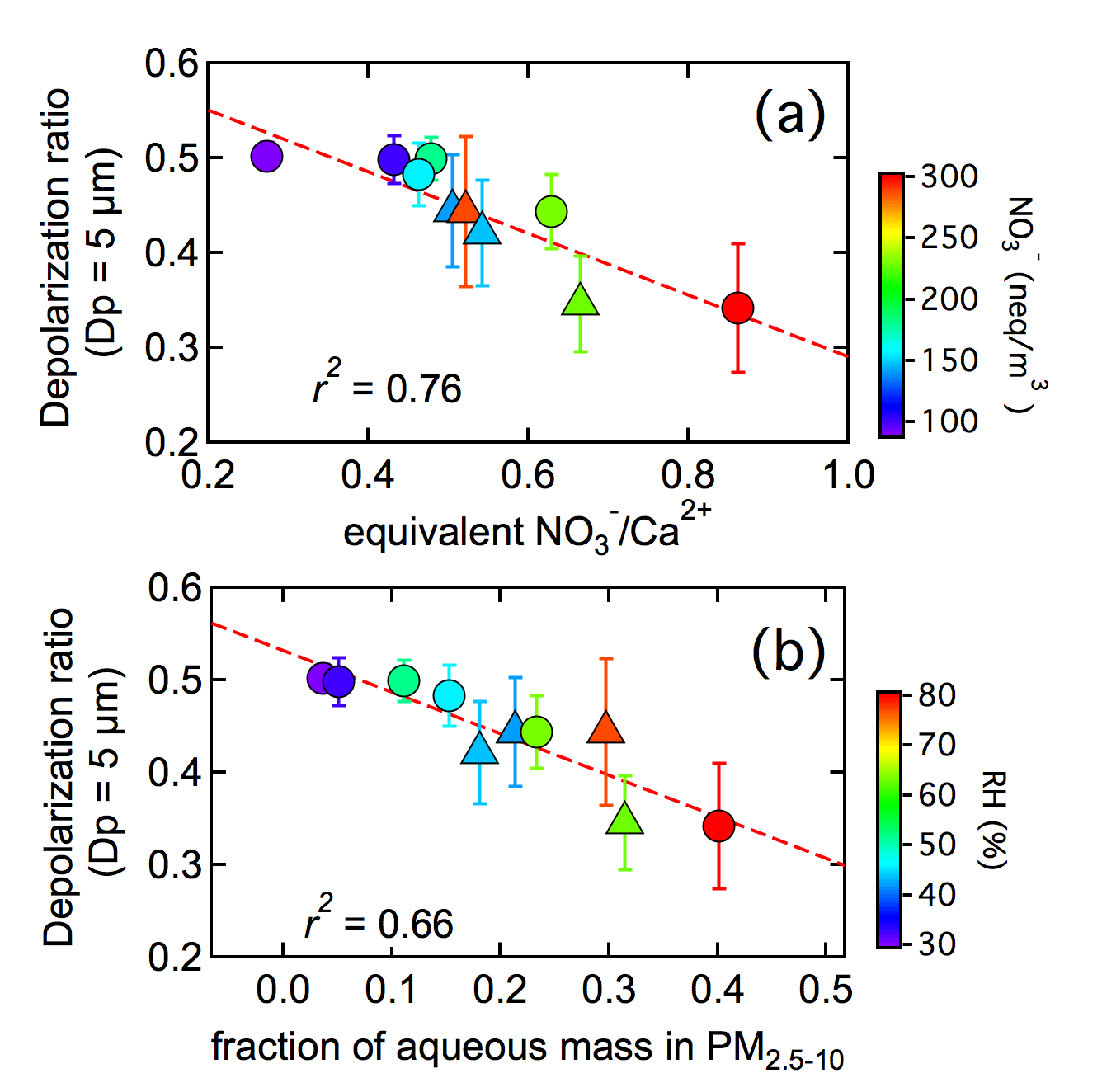“Single-particles inspection using electro-microscopy can identify coated/contaminated dust particles,” says Dr. PAN Xiaole from Institute of Atmospheric Physics, “but real-time measurement on the morphological variation of dust particles was difficult due to labor-intensively manual operations.” In a recently published paper in Scientific Reports, PAN and his collaborators from China and Japan investigate polarization of oscillation direction of back-scattering signal of single dust particles online on the basis of a newly developed, bench-top optical particle counter.

Fig.2 Relationship between the depolarization ratio of dust particles (Dp = 5 μm) and equivalent ratio of NO3-/Ca2+ (a) and the mass fraction of aqueous matter in the coarse mode (b). The colored circles in the plot represent the data during dust impact period from March 28 to April 1, 2015. The standard deviation (error bar) of depolarization ratio of dust particle was calculated for the dataset corresponding to filter sampling period. (Image by PAN Xiaole)
A real-time decrease in Asian dust depolarization was observed in North China for the first time. PAN reckons that it can only be caused by the decrease in the particle aspect ratio, which was reflected by the coating of an air pollutant, such as the deliquescent dust-nitrate Ca(NO3)2. “This phenomenon was obvious when the dust particles were stagnant in a polluted region with high relative humidity condition.” Says PAN. The statistics highlight the significant importance of internally mixed “quasi-spherical” Asian dust particles, which were more hygroscopic and likely to act as cloud condensation nuclei (CCN).
Because the NOx emission in East Asia has been rapidly increasing over the last decade, their findings imply that nitrate has become increasingly important on the morphological change of Asian dust and its subsequent spatial allocation.
“Nitrate plays a leading role in regional climate change.” PAN concludes. And he adds, “Many processes associated with the direct/indirect effects of dust-nitrate are still insufficiently understood, and this requires more attention from the public and poses another challenge for the observation and modeling communities.”
Their findings have been published and online at Scientific Reports.
Citation: Pan, X., Uno, I., Wang, Z., Nishizawa, T., Sugimoto, N., Yamamoto, S., Kobayashi, H., Sun, Y., Fu, P., Tang, X., Wang, Z., (2017). Real-time observational evidence of changing Asian dust morphology with the mixing of heavy anthropogenic pollution. Scientific Reports 7, 335. http://www.nature.com/articles/s41598-017-00444-w
Contact: PAN Xiaole, panxiaole@mail.iap.ac.cn
